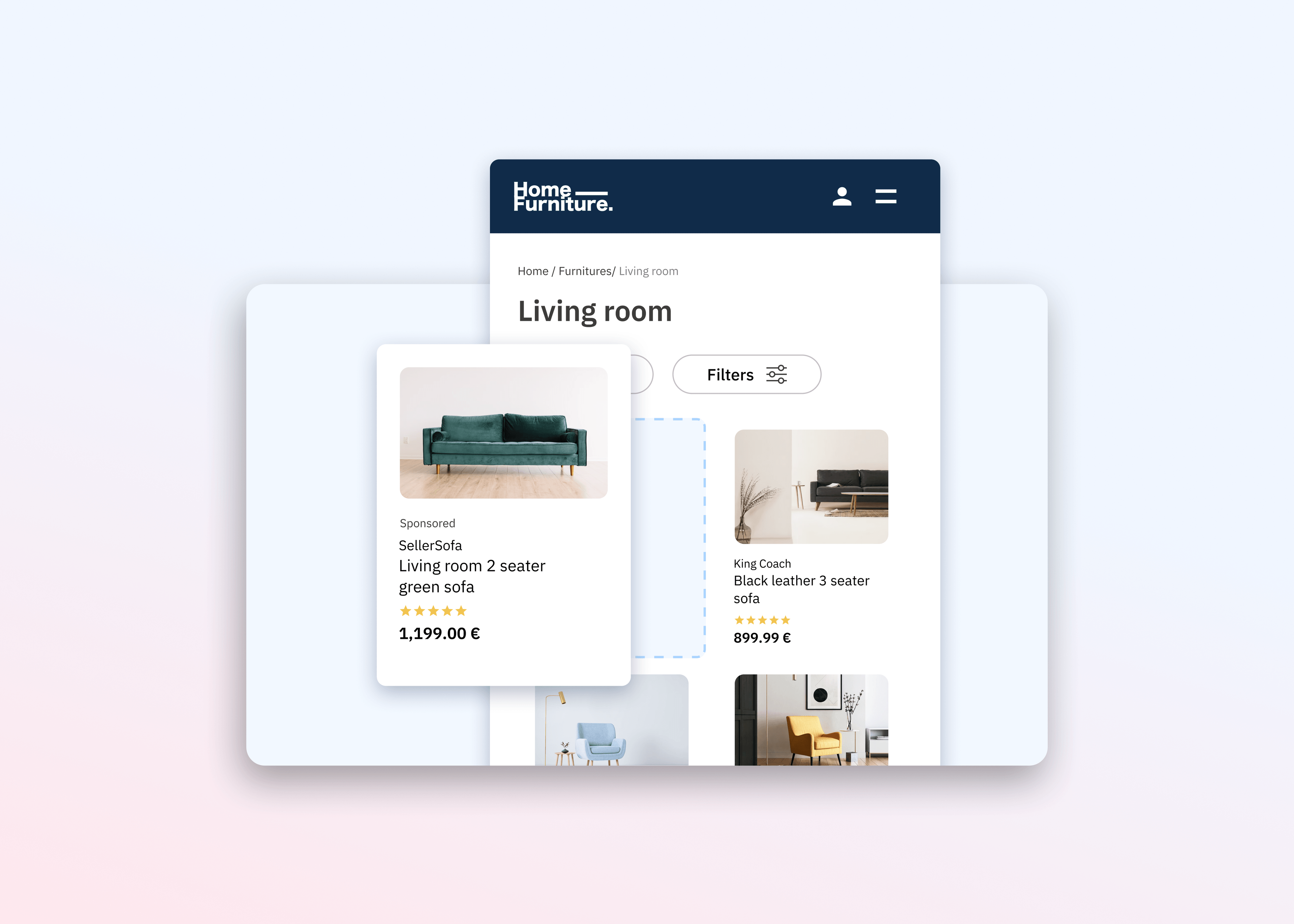How to build high-performing retail media placements — without hurting UX

A high-performing retail media program is about the shopper experience as much as it’s about CTR and fill rates.
When retailers serve irrelevant, poorly placed ads, they risk damaging consumer trust and reducing conversion. But with the right tech and controls, retailers can safely monetize placements by surfacing helpful products and guiding shoppers through the buying journey.
Retailers no longer have to choose between experience and revenue. So how can they get both?
Dispelling myths about placement and UX
There’s a long-standing assumption in retail media that more ad placements will lead to a worse user experience. While sometimes true, this isn’t always the case.
When placements are well integrated, relevant and driven by shopper context, they can support discovery and conversion. For example, consider the experience of shopping on Amazon. A customer typing a search term will see up to 20 ads per page result, but the high number of ads does not erode sales. Instead, Amazon sees incredible traffic and growth of revenue each year.
In order to have relevant ads, you need two things:
A sophisticated AI-powered engine focused on relevance and personalization;
A high-competition advertising environment, allowing for better optimization in selecting the right product for the right shopper at the right placement.
Leveraging AI as a UX safeguard
Many retail media platforms make the same costly mistake: they prioritize cost-per-click over shopper experience to decide who wins auctions.
Smart platforms take the opposite approach — they lead with relevance. This strategy drives higher click volumes and, even at lower CPCs, and creates win-win outcomes where advertisers see better ROAS, shoppers discover products they love, and platforms enjoy higher revenue today, plus guaranteed growth tomorrow.
Mirakl Ads is one of those smart platforms, designed with a proprietary AI engine that evaluates every ad impression on the basis of:
Shopper intent signals: Which products the shopper browsed or purchased.
Product-level performance: CTR, purchase rates, product organic results and organic purchases.
Placement context: Which keyword, category or product page, all empowered with image recognition.
Opening more placements, responsibly
Expanding your ad inventory doesn’t mean opening as many placements as possible. Instead, your focus should be on testing, measuring and optimizing with UX in mind.
High‑impact placements, like those visible on page load before the scroll, capture attention immediately and can drive strong performance. But below‑the‑fold placements often reach shoppers who are deeper in the journey and ready to convert.
Balancing the two is critical: Retailers can use premium, above‑the‑fold real estate to spark discovery, while using lower‑page placements to reinforce relevance without overwhelming the shopper.
Mirakl’s Ad Placement Manager broadly facilitates the process. With it, retailers can launch new placements, monitor performance and refine strategy in self-service without developer support.
The Mirakl Ads platform enables you to:
Cover the full onsite funnel by adding placements to home page, search results, category pages or product detail.
Offer many types of formats tailored to your needs and the shopping experience you want to create: with sponsored products, shoppable, native and video formats.
Create and edit placements in real-time using our fully self-serve platform (no support ticket required).
These capabilities unlock higher revenue and better UX.
For example, a retailer might use the Mirakl Ads platform to introduce a mid-grid placement for limited-time products, track improvements in session duration and click-through rate, then roll out the placement across other high-traffic categories.
Harmonizing UX and monetization
Retailers don’t need to sacrifice UX for revenue (and vice-versa) — the most effective retail media programs enhance both.
With tools like Mirakl Ads, you can expand placements, run tests and use AI to ensure every impression counts, all while making the customer journey easy and enjoyable.
To learn more about how Mirakl Ads can help you strike the right balance between ad placements and your customer experience, contact us today.



